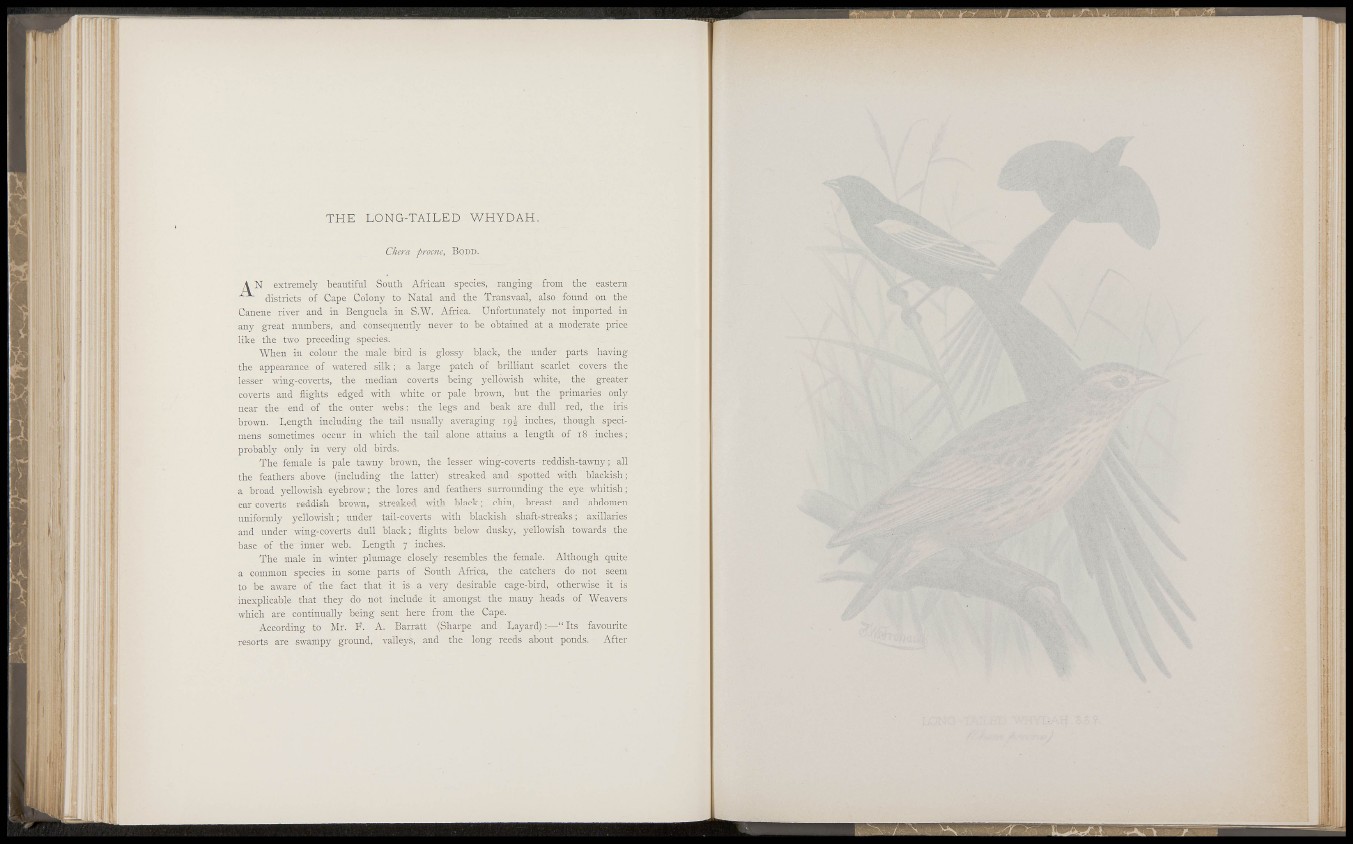
• i ' i i
lii i i
T H E LONG-TAILED WHYDAH.
Chera procne, BODD.
A N extremely beautiful South African species, ranging from tlie easteni
districts of Cape Colon}- to Natal and tlie Transvaal, also found on the
Canene river and in Bengnela in S.W. Africa. Unfortunatelj' not imported in
any great numbers, and consequently never to be obtained at a moderate price
like the two preceding species.
When in colour the male bird is glossy black, the under parts having
the appearance of watered silk ; a large patch of brilliant scarlet covers the
lesser wing-coverts, the median coverts being yellowish white, the greater
coverts and flights edged with white or pale brown, but the primaries onl}^
near the end of the outer webs: the legs and beak are dull red, the iris
brown. Length including the tail usually averaging 19^ inches, though specimens
sometimes occur in which the tail alone attains a length of 18 inches;
probably onlj' in very old birds.
The female is pale tawny brown, the lesser wing-coverts reddish-tawny; all
the feathers above (including the latter) streaked and spotted with blackish;
a broad j'ellowish eyebrow; the lores and feathers surrounding the eye whitish ;
ear-coverts reddish brown, streaked with black; chin, breast and abdomen
uniformly yellowish; under tail-coverts with blackish shaft-streaks; axillaries
and under wing-coverts dull black; flights below dusky, yellowish towards the
base of the inner web. Length 7 inches.
The male in vsdnter plumage closely resembles the female. Although quite
a common species in some parts of South Africa, the catchers do not seem
to be aware of the fact that it is a very desirable cage-bird, otherwise it is
inexplicable that they do not include it amongst the many heads of Weavers
which are continually being sent here from the Cape.
According to Mr. F. A. Barratt (Sharpe and Layard) :—" I t s favourite
resorts are swampy ground, valleys, and the long reeds about ponds. After
ii
Uj
ir •